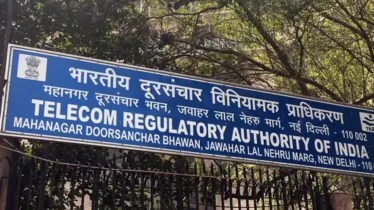The Telecom Regulatory Authority of India (Trai) is exploring models for pricing the satellite spectrum, which are linked to either adjusted gross revenue (AGR) of the service providers or per-MHz quantity of spectrum held by them.
Charging on the basis of AGR, would mean that the pricing model would be flexible and only aligned to the financial performance of the satellite operators. The other model being explored, which is on a per-MHz of spectrum held, is commonly used in other countries.
In a much awaited consultation paper on terms and conditions for the assignment of spectrum for certain satellite-based commercial communication services, Trai has sought inputs from stakeholders on the models based on which the spectrum can be priced. Stakeholders have been asked to suggest any other methodology for pricing the spectrum, Trai said.
The consultation of satellite spectrum and its pricing assume significance as it is only after Trai’s recommendation, the spectrum will be allotted on an administrative basis to operators like OneWeb, Jio, Starlink, among others, to commercially start satellite-Internet services.
“A concern with AGR-based charging is that as spectrum charges are not tied to the amount of spectrum held, it may encourage some operators to keep spectrum idle rather than utilising it effectively,” Trai said.
“One approach to address this issue of hoarding of spectrum could be the imposition of a minimum spectrum charge for the amount of spectrum held by a service provider,” the regulator added.
Currently, the spectrum for some space-based communications services is being assigned through an administrative mechanism with formula-based charging for some services and percentage of AGR-based charging for others.
For example, for services such as fixed satellite services, broadcasting satellite services, mobile satellite services a standard annual royalty factor is fixed as Rs 35,000 per frequency, in addition to a licence fee.
For commercial VSAT (very small aperture terminal) service, the spectrum charges are being levied as a percentage of AGR, which is 3-4%.
In a 91-page consultation paper, Trai has sought comments on issues such as frequency bands to be assigned to satellite companies for providing data communication and Internet service, maximum period of assignment of spectrum, issues regarding possible interferences from mobile networks, among other things.
On the spectrum bands to be allotted, Trai said the C-band (4-8 GHz), Ku-band (10-15 GHz) and Ka-band (17-31 GHz) are the most popular bands for fixed satellite services in India
Besides, Trai is also looking at the need to prescribe timelines of assigning spectrum, impose certain additional roll-out obligations for the assignment of frequency spectrum, and surrender of spectrum.
On the period of spectrum allocation, Trai said there are two views – the period of validity of spectrum assignment should be 20 years in line with the period of validity of the service authorisation, so that it provides sufficient certainty to service providers for recovery of their capital investments. Another view is that there can be a smaller period of validity of spectrum assignment for such services like five years. This because satellite-based broadband services are, at present, in a nascent stage of development, and their business potential would emerge after some years of operations.
“Considering that the effective life of a satellite system varies from 5 to 10 years for LEO (low-earth orbit) satellites, a delay in the assignment of spectrum may result in non-utilization of satellite resources. Therefore, it is important that the frequency spectrum is assigned to the authorised entities within a reasonable timeframe,” Trai said.
Stakeholders can send their comments on the consultation paper by October 18.
